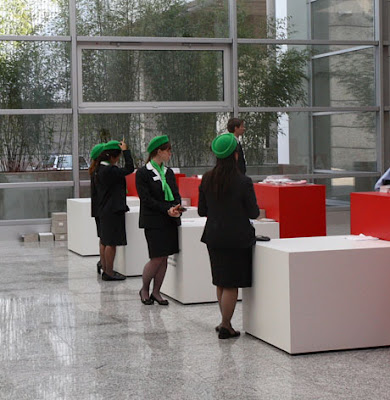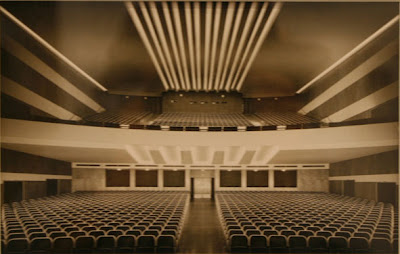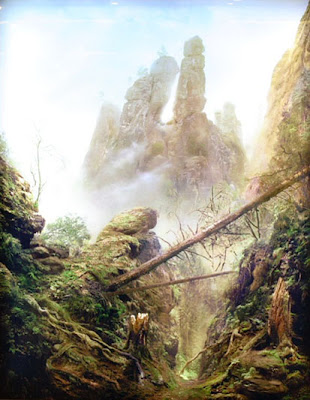This is our second last, or if you prefer, “penultimate” guest blog until we return full time in mid May. It’s from a long time reader of the our blog. Please enjoy

Carl Andre, Floor Piece, Art Cologne.
Dear the art life,
As you are, at the moment accepting unsolicited postings to your Blog I thought I would use this as an opportunity to inveigle your readers with some impressions and images of my recent trip to Germany. I was there, as were many colleagues, curators and collectors to participate in among other things, ART Cologne. This annual event is according to its own publicity the world’s oldest Art Fair and currently includes hundreds of galleries, numerous museums, publishers and magazines. This year it was one of several similarly organised fairs taking place in and around the city such as ‘dc’ an abbreviation of Düsseldorf Contemporary and Liste Cologne. It is very difficult to convey accurately a sense of the scale of these extravaganzas to an audience unfamiliar with them except by stating that the foyer of ART Cologne is about the size of the new Gallery of Modern Art in Brisbane. The visitor enters by ascending a vast set of stairs, proceeding down equally gigantic marble floored halls where ultimately they are greeted by what seems like a flock of Lufthansa hostesses, who pass the admittance ticket (20 euros if you don’t have a freebie) through a scanner before checking bags for incendiary devices, purloined artworks or other proscribed material.

Tickets please… entrance to Art Cologne
Inside unfolds a series of displays; some are museum standard curated overviews of very recent art. More usually it is one or two works from artists represented by those galleries with sufficient financial resources to enable participation in what, when ones totals up transport costs, the hire and fitting out of the stand, travel and accommodation must be a very, very expensive undertaking. This year from Australia those galleries were STILLS and Conny Dietzschold both from Sydney and each presenting a selection of artists represented by them. As approximately half the work in all the fairs dealt in one way or another with photography, video or other similar technologically based art forms the broad selection of positions advocated by the artists represented at STILLS found an enthusiastic audience, with strong works by Pat Brassington, Peter Volich and Merilyn Fairskye.
I suppose that what seemed really evident to most visitors was that currently interest in photographs of events or things has been more or less eclipsed by an engagement with events or things that take the form of photographs. There were, as you would expect some really fantastic examples of the former with massive, absolutely drop dead gorgeous works by Candida Hoffer including a series of images from Buenos Aries at Galeri K from Oslo. These sumptuous images however looked like money on the wall: but old money and not in the way in which this expression is usually used. I mean ‘old money’ in the sense of redundant currency: valuable historically but unspendable like pounds, shillings and pence became after the introduction of the dollar.

Jakob Koerfer, Capitol Theatre, Dortmund, 1950
The feeling that an epoch in the photographically negotiated picture (for want of a better term) is over was heightened not only by the presence of much more conceptually interesting digital work or painstakingly realized faux photographs, usually some sort of montage but also prescient selections of vintage material such as Jacob Koerfer’s Capitol Theatre Dortmund (1950) shown at Sabine Schmidt Galerie, which worked to contextualize much photography of the past 20 years as a form of heightened technical competency: albeit beautiful but still something caught in the glass of the camera lens in the way in which Jurassic insects were fossilized in amber. Either way references to the moment of photography’s origin and the potential of what Foucault describes as pseudo-paintings were evidence of the new literacy coalescing around the digital image, contributing to the increasing sentiment that it’s day in the sun was dawning.
There were plenty of paintings and sculptures covering the wide range of stylistic and formal positions that have been elaborated over millennia of these activities and some imagery usually (again) montaged photographs, maps, newspapers or other form of printed matter that in one way or another endeavored to expand upon this rich inheritance – or poison chalice – depending on which way you look at the accumulation of historical material that constitutes the western tradition.

Hiroyuki Masuyama, Caspar David Friedrich.
A characteristic example of this would be Hiroyuki Masuyama’s Caspar David Friedrich series in which the he took several hundred photographs of the same locations painted by Friedrich, which the Japanese conceptual artist then used to re-create the paintings in every detail as light-boxes in the exact size of the Friedrich paintings. An exercise that in no way exceeded in complexity or originality the average higher school certificate art work which probably explains both why most real people are more interested in the dynamic and innovative imagery generated by gaming programmers than artists and why conceptualists would be advised to read more literature and fewer texts. Which is not to say that the old dudes were not pumping out some interesting décor as Carl Andre’s funky metallic tape floor environment at Konrad Fischer’s stand at Düsseldorf Contemporary evidenced. Proving once at for all if disco is not dead than at least it is no longer mortal.
Hey thanks. Take care and like Lassie… come home soon.
Gary Carsley
